

Cyrene
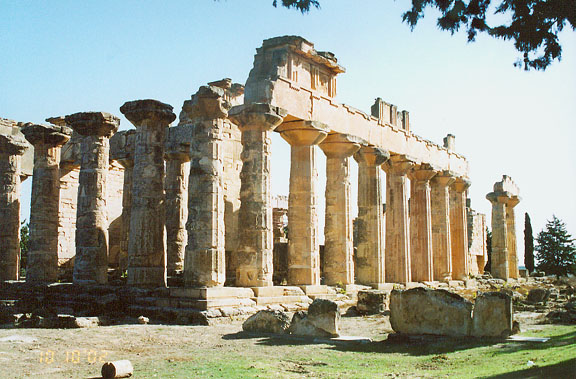
Temple of Zeus
Cyrene (city)
, ancient city in North Africa, located on the site of what is now Shahhât, Libya. Cyrene was situated 10 km (6 mi) inland from the port of Apollonia, now Sûsah, or Marsá Sûsah, Libya.
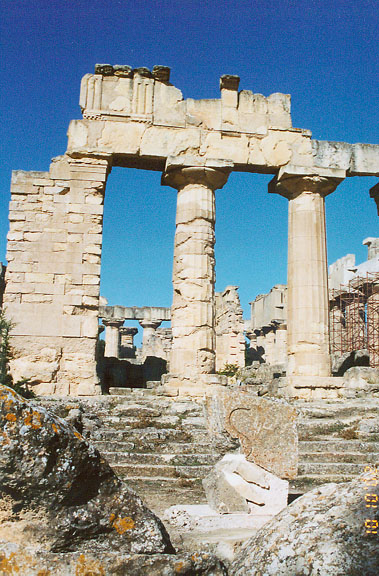
first constructed 5th century BC
(rebuilt by Hadrian in 120 AD)
reduced to rubble by earthquake in 365 AD
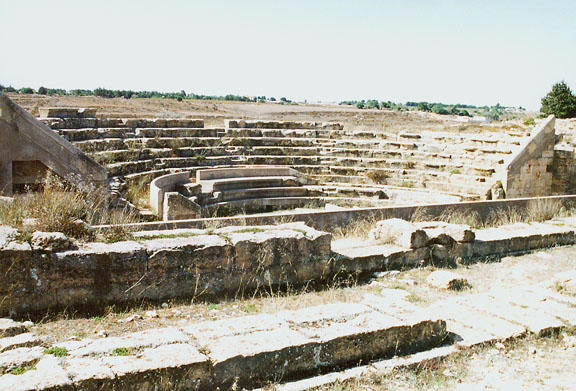
Greek theater (6th century BC)
(rebuilt by the Romans)
It was accorded a constitution by King Ptolemy I, who ruled from 323 to 285 BC. It then came under the rule of the Roman Empire. A series of ordinances was granted by Augustus, who ruled as the first emperor of Rome from 27 BC to AD 14. Under Roman rule, Cyrene retained its importance as a seat of government in the province of Cyrenaica.
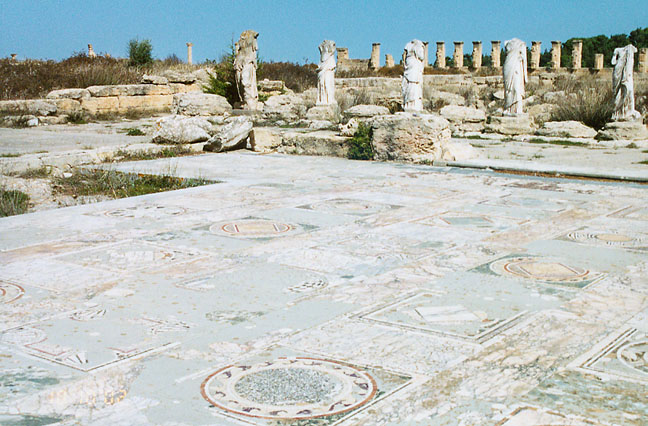
Agora
(public square covered with mosaics)
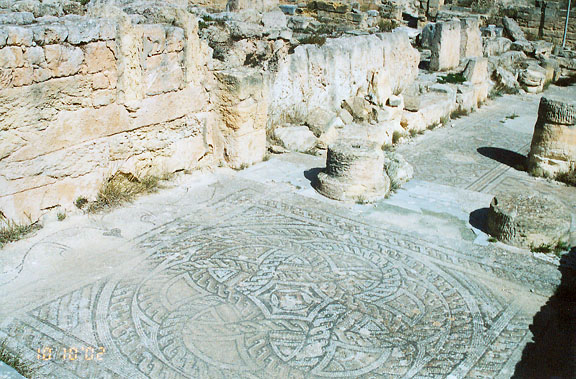
temple of the Agora with a mosaic floor
Greek lyric poet Pindar celebrated the successes of Cyrene’s rulers in the ancient games of the Greeks, and also sang of Aristaeus, the child produced by the nymph Cyrene and the Greek god Apollo. Cyrene had its own local school of philosophers.
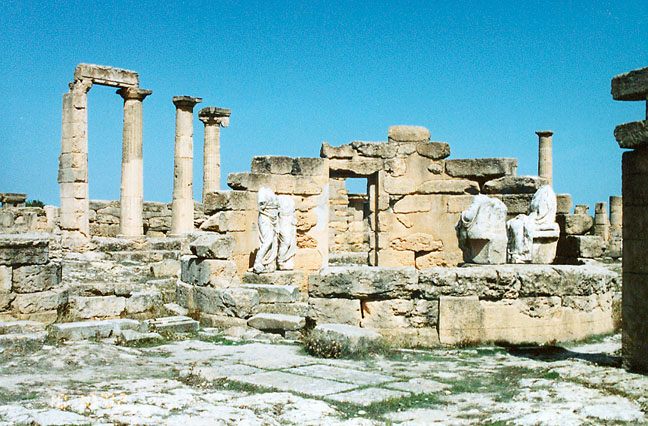
Sanctuary of Demeter and Kore
(site of a woman only annual celebration)

Naval Memorial
(in the form of a ship riding on a dolphin)
(3rd century BC)
The settlers established a sanctuary to Apollo near the spring, and they also built simple dwellings there. The city eventually spread out along both sides of the depression, with a citadel to the south, a market center to the southeast, and a temple of Zeus to the east. Tombs occupied the hillsides around the site.
Text by Microsoft Encarta
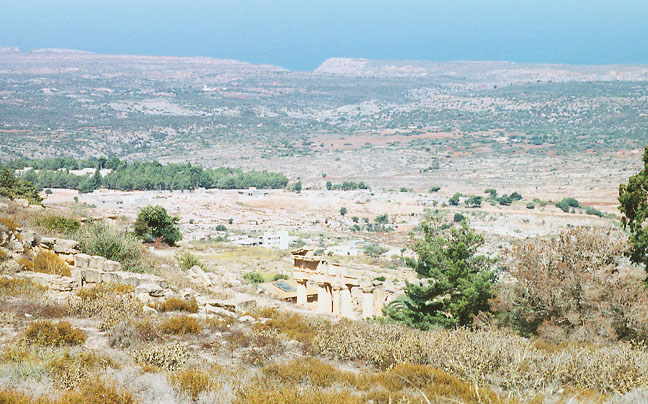
looking over the countryside
(Temple of Apollo below)

Sanctuary of Apollo
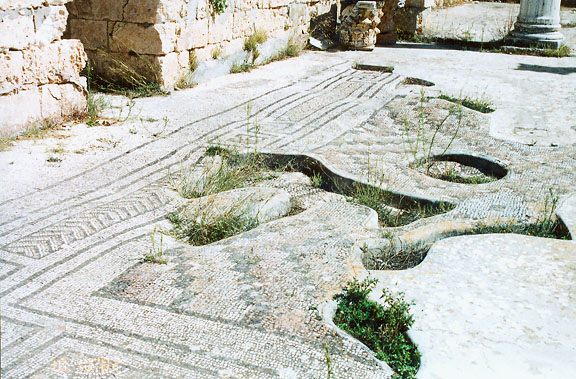
mosaic floor
(a Byzantine mosaic laid over an earlier Roman mosaic)
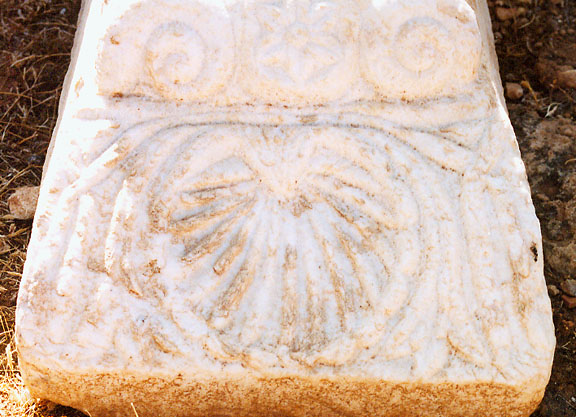
shell motif
(symbol of St James, the apostle)
![]()
Necropolis
between Cyrene and Apollonia
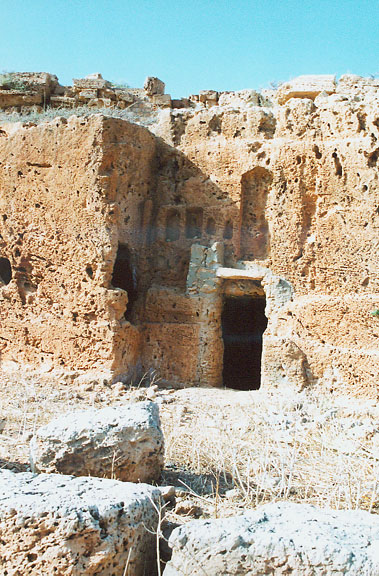
graves from Greek period (500 BC) to Byzantine period (600 AD)
![]()
Apollonia
the harbor for Cyrene
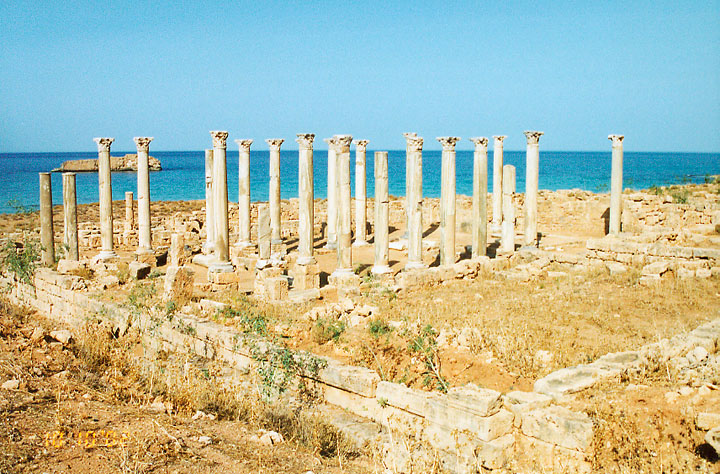
Apollonia
the ancient city
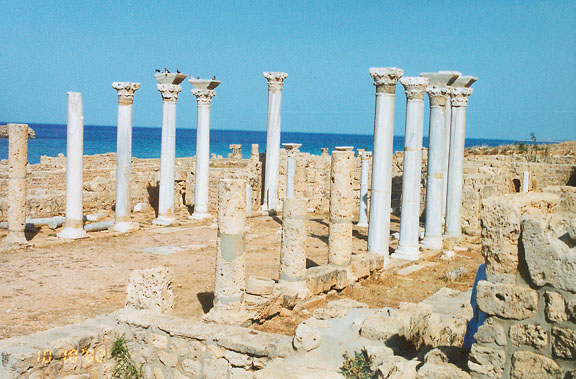
Byzantine Duke's Palace

a Byzantine residence

the Greek theater.
![]()
![]()